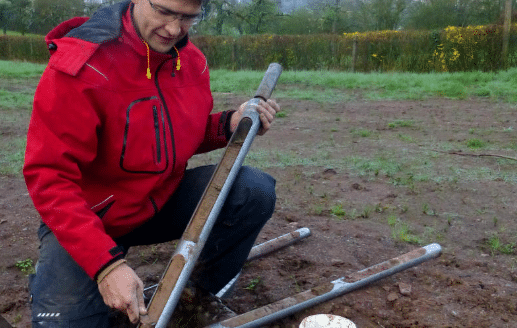Why a Geotechnical Survey Is a Must for Building Padel Courts?
When it comes to building padel courts, one factor is often overlooked but plays a critical role in the long-term success of the project: the condition of the ground. No matter how well-designed your court is, if the soil beneath is unstable or not properly understood, you could face serious issues down the line—like cracks, drainage problems, or even structural failure.
This is why a geotechnical survey, also known as a soil investigation report, is essential. It provides detailed information about the subsurface conditions at your construction site and forms the foundation—literally and figuratively—of a safe, durable, and professional padel court.
What Is a Geotechnical Survey?
A geotechnical survey is a type of study done by engineers or soil experts to find out what’s under the ground before you start building. They drill small holes, take soil samples, and sometimes use special tools to see what the ground is like.
The goal is to understand how the soil will react to things like heavy weight, rain, cold weather, and time. This helps to make sure the ground is strong and stable enough for what you plan to build.
In the case of padel courts, this is very important. The court has heavy parts like glass walls, metal posts, and fencing. If the ground isn’t strong enough or has weak spots, the court could shift, crack, or get damaged later on. Even small differences in the type of soil can make a big difference in how safe and long-lasting your court will be.
For padel courts, which often feature concentrated loads from steel posts, glass walls, and fencing systems, this information is critical. Even small variations in soil composition can significantly impact stability.
Key Benefits of a Geotechnical Survey for Padel Court Construction
1. Accurate Foundation Planning
One of the main reasons to conduct a geotechnical survey is to plan a suitable foundation. The report will tell you what type of soil is present, how much load it can support, how it settles over time, and whether it poses any risks. With this data, engineers can design a foundation that is both safe and cost-effective.
Without this information, there’s a risk of overengineering—spending more money than necessary—or underengineering, which can result in costly damage later on.
2. Improved Drainage and Soil Stability
Good drainage is essential for the performance and durability of any sports facility, and padel courts are no exception. Poor drainage leads to water pooling, surface damage, and mold or moss growth. A geotechnical survey helps identify whether the soil allows water to flow through or if additional drainage layers are required.
In some cases, the soil may need to be replaced or treated to improve its properties. Knowing this upfront allows you to plan accordingly and avoid surprises during or after construction.
3. Frost Protection in Cold Regions
In regions affected by seasonal frost—such as Germany, Austria, and Switzerland—proper frost protection is a must. Freezing and thawing cycles can lead to soil expansion and contraction, which causes the ground to shift and structures to crack. A geotechnical survey identifies the frost depth and soil moisture content, so you can design a frost-proof foundation.
This is especially important if the court will be used year-round or if your business depends on long-term reliability and safety.
4. Early Detection of Risks
Sometimes, the soil may contain organic layers, soft fill material, or a high groundwater table. These conditions can be hidden below the surface and are impossible to detect without a proper survey. If not addressed, they can cause long-term settlement, cracks in the concrete slab, or water damage to the court structure.
By identifying these risks early, you can take corrective action—such as reinforcing the foundation or improving the soil—before construction begins. This saves time, money, and frustration in the long run.
Is It Required?
Yes, in many places—like Germany, Austria, and Switzerland—local authorities ask for this report before approving a padel court project. It’s also needed to do safety calculations based on the location.
How Much Does It Cost?
Depending on the scope and location, the cost of a geotechnical survey typically ranges between €1,000 and €2,000. But it often saves more than that by:
- Avoiding unnecessary overengineering,
- Preventing costly changes later,
- Helping everyone plan better from the start.
Conclusion
A geotechnical survey isn’t just a technical step you can skip. It’s a really important part of building a padel court that’s safe, solid, and long-lasting.
Whether you’re building a court in your backyard or setting up a commercial sports center, this study helps you make smart decisions from the very beginning.
By knowing what the ground is like before building, you avoid surprises, follow the rules, and make sure your court is ready to offer a great experience to every player—for many years to come.





